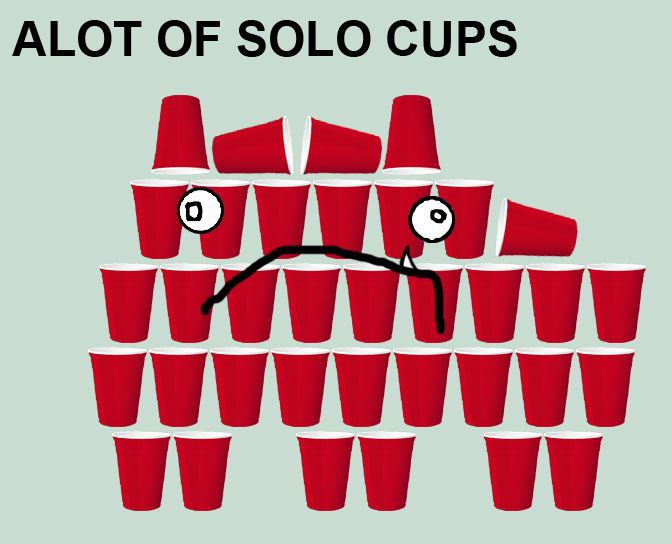Week 8: accepting v. leaving aside comments
UPDATE on THURSDAY: (link to same MP4 here on Google Drive); this file supports you in the second-to-last Eli Review task.
to listen+view about style. FRIDAY? We will meet here again Monday+WEDNESDAY+Friday OHitS/AMA google doc. Recall that you learn a great deal from this work because what your colleagues write serves as a mentor text to your critical thinking and clear writing. If you like, you can skim/read about the value of mentor text work in this five-page exhibit (co-written with professional colleague M.K.) I work with the National and UMD Writing Project program for -16 teacher training.
Language Use/Spelling reminder about alot v. a lot
Do not make this mistake: the abomination of alot. alot is not a word. Let's see what this blogger Allie Broch says about remembering to use a lot and not alot(click into image to access her website).![]()
Now, to this bit of charm from N.N., former student and now dentist: Ta DAH!
Bonus: do you want to know more about Allie Brosh and her thoughtful, honest way of writing abot her depression and anxiety? Read this new Rolling Stone article.
Remember the Buffy worksheet on three sentence strategies? We will take up past tense/present tense in science writing. This choice is a subtle but powerful tool. Bottom line? Be aware of this tendency to write in past tense, taking care for accuracy (a guiding value in science) and strategic expression for persuasion (science IS an argumentative activity).
Consider Darwin’s action and intention noted here in Jeanne Fahnestock’s Rhetorical Style (1997):
Scitable (a Nature publication) is very good on this verb choice (focus on the verb section, in the first part of this very good exhibit on writer craft in science document, dividing into categories, yet we focus primarly on the first two (simple past and the present).
Past tense
Work done
We collected blood antibodies from covid patients . . .
Brock determined the growth rate of Thermus acquaticus. . .
Consequently, botanists decided to divde and rename the Chrysanthemum genus . . .
Work reported
Mullis, et al., reported a similar growth rate for Thermus acquaticus . . .
In 2010, Chu published an alternative sequencing method for PCR
Goodall observed opposite behavior in chimpanzees. . .
Observations
The men in Group A developed, on average, twice as much scalp hair regrowth . .
The number of defects increased sharply . . .
The trophic cascade rate was close to 78% . . .
Present tense
General truths
Microbes and fungi in forest duff have a profound influence on tree communities . . .
The R or K number provides a scale of reproductive rate in the microbial community.
Poor air quality increases the risk of lung disease . . .
Atemporal facts (the writer speaks to the reader NOW, even if paper/text is old)
This literature review presents the results of . . .
The conclusion explains the difference between policy options implied from the researcher's findings.
Behbood's 1969 paper provides a framework for . . .Darwin's Origin of Species
QUESTION! Would your verb be in present or simple past?
Future tense? (easy to see, relatively; work yet undone or future implications)
In a follow-up experiment, Hipple will study the role of silicon in microbial digestion for . . .
The influence of pressure will be the object of future research in exobiology in order to . .
Reader Comments